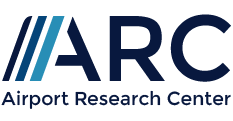New Approach for Scenario Based Stand & Gate Allocation and Planning
New Approach for Scenario Based Stand & Gate Allocation and Planning
Fast time simulation and automated allocation have become an important methodology for supporting airport planning and optimization of operations. Using a computer model of the airport, selected processes are simulated based on the chronological proceeding of the flights at the airport. By playing through various scenarios, planning options and operational improvements can be evaluated and by looking into the future, better decisions can be made by planners and management.
Based on the requirements from the aviation industry and looking back on a long-term experience in the development of IT systems for the aviation industry, the Germany-based company ARC provides CAST, a module-based set of airport IT-Solutions.
Starting with the CAST Terminal passenger simulation module as a basis, a vehicle and ground handling simulation module and an aircraft traffic simulation module were added. The CAST products have become a standard tool for airport planning, capacity analysis and process optimization worldwide and often represent a mandatory requirement for airport planning and optimization processes.

Test and Optimize Aircraft Stands With a Complete Airside Simulation
An important application area is the planning of aircraft stands. This can be tested and optimized by a complete airside simulation, taking into account not only the number and size of the stands but also the traffic flow to and from the stands. By using different variants in the routing and / or rolling concepts, waiting times during taxiing and mutual interference during push back can be reduced.
In addition to the holistic view on parking areas and taxiing traffic, there are many other tasks and optimization potentials with regarding aircraft stands and gates. Small and medium-sized airports in particular require a cost-effective IT solution that can be adapted to individual requirements.
For this ARC provides the CAST Stand & Gate Allocation, which can be used in combination with the other CAST modules but also as a most powerful stand-alone solution for various tasks. Extensive requirement analyses were carried out with users, which can be roughly divided into long-term, medium-term and short-term operational tasks:
- Proactive stand management
- Stand and gate capacity analysis
- Season planning (next seasons schedule)
- Airside capacity declartion
- Validation of airside masterplanning
- Demand-capacity balancing (DCB)
- Construction phasing
- What-If – Scenario testing (compare different options)
- Next month, next week, next day stand and gate planning
- Operational allocation (Ad-hoc)
Within each of these categories there are numerous use cases, which can be concretized by the following questions as examples:
- What is the stand demand and the stand capacity for a given schedule?
- How to adapt / extend the stand configuration to meet the future fleet mix?
- How many flights can be added to the schedule without exceeding stand capacity?
- How to get the best balance between number of towing and peer stand utilization?
- Will the next seasons schedule exceed the number of available stands?
- How to deal best with disruptions like bad weather or winter conditions?
- When to build and how to build new stands?
Further requirements result from the actual application. In particular, efficient and flexible configuration and powerful scenario management are important in order to achieve the defined objectives and thus go beyond the functional scope of conventional RMS systems and supplement them. Through a semi-automated import of different flight plan formats and a free configuration of rules, different scenarios can be defined and analyzed very quickly.
In order to define the allocation rules CAST provides a very flexible allocation algorythm. In addtion to hard-rules with strict true/false conditions, the CAST algorythm allows to precisely define the quality of a potential allocation solution and find an individual balance between contractionary objectives. For example, the user may define high costs for serving a passenger flight at a stand far away from the passenger terminal, but in case all desirable stands are blocked, CAST will allocate this particular turnaround to that remote stand, because there is no other option.
Evaluate Various Allocation Strategies and Achieve the Optimal Utilization of the Infrastructure
The results are not only displayed via a Gantt chart of the allocation, all important and desired valuation parameters are also analyzed ad-hoc via an integrated dashboard. This makes it possible to test and evaluate different allocation strategies and to achieve an optimal utilization of the infrastructure.
By using a 3D animation of the occupancy of the stands during the course of the day, a further analysis option is available, which particularly facilitates the communication and discussion of scenarios.
The optional combination of planning and operational allocation can significantly improve the quality of stand allocation. In purely operative systems, it is usually not possible to test and compare different scenarios, or only to a very limited extent. With CAST it is possible to transfer the results into existing operative systems as well as to use it as an operative system itself.
Thus, CAST Stand & Gate Allocation offers a scalable, flexible, efficient and powerful support tool for small, medium and large airports. As a result, considerable savings can be achieved in the construction and expansion of the infrastructure as well as an optimal operational utilization of the available parking spaces. This concerns both to the number of feasible flight movements and the quality of allocation in terms of passenger comfort, airline preferences and flight operational criteria.
CAST Stand and Gate Allocation gets highest user ratings as well for the usability as for the quality of the solution. Several airports and consultants already replaced existing solutions by CAST Stand- and Gate Allocation.





